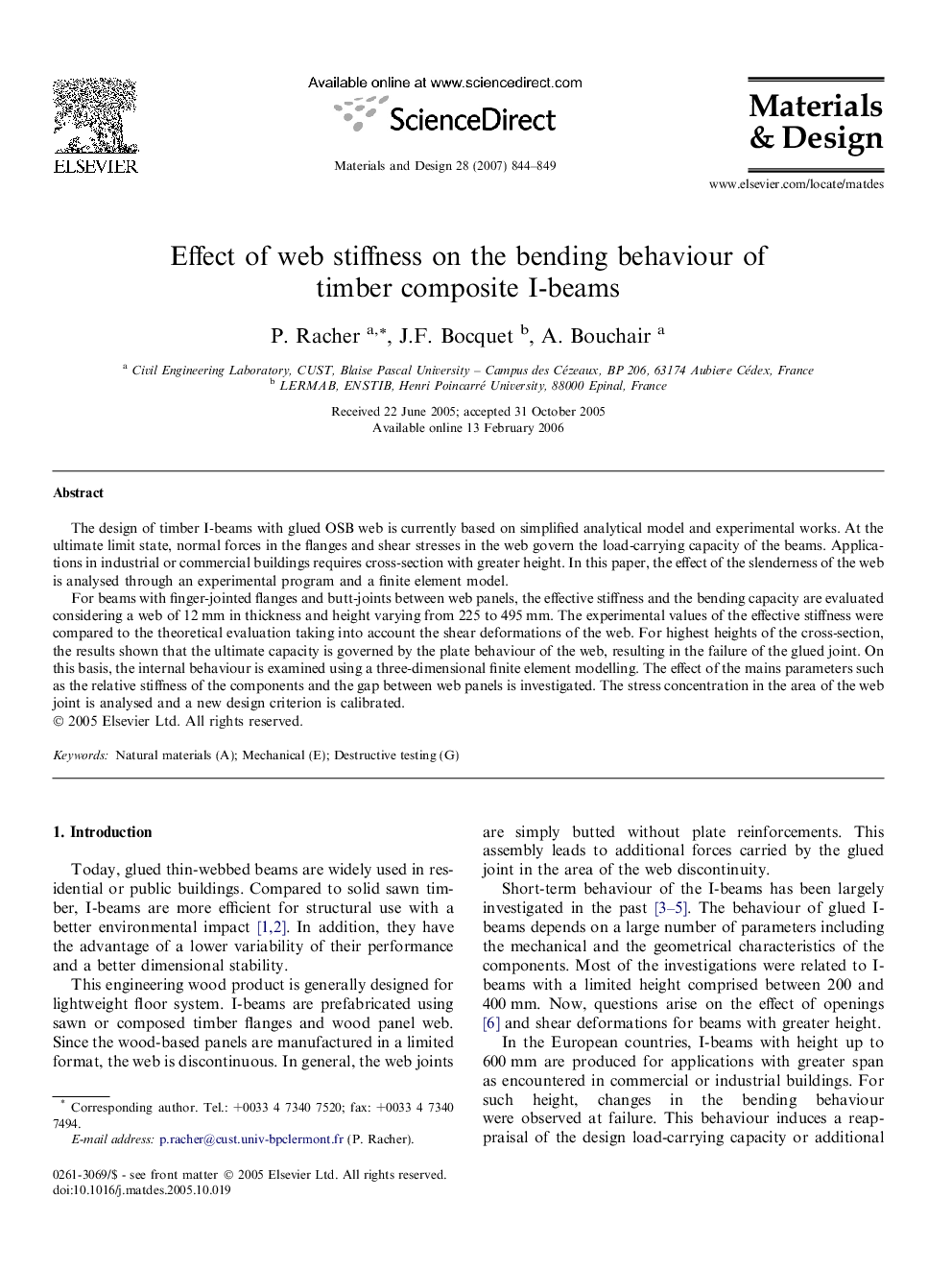| Article ID | Journal | Published Year | Pages | File Type |
|---|---|---|---|---|
| 833520 | Materials & Design (1980-2015) | 2007 | 6 Pages |
The design of timber I-beams with glued OSB web is currently based on simplified analytical model and experimental works. At the ultimate limit state, normal forces in the flanges and shear stresses in the web govern the load-carrying capacity of the beams. Applications in industrial or commercial buildings requires cross-section with greater height. In this paper, the effect of the slenderness of the web is analysed through an experimental program and a finite element model.For beams with finger-jointed flanges and butt-joints between web panels, the effective stiffness and the bending capacity are evaluated considering a web of 12 mm in thickness and height varying from 225 to 495 mm. The experimental values of the effective stiffness were compared to the theoretical evaluation taking into account the shear deformations of the web. For highest heights of the cross-section, the results shown that the ultimate capacity is governed by the plate behaviour of the web, resulting in the failure of the glued joint. On this basis, the internal behaviour is examined using a three-dimensional finite element modelling. The effect of the mains parameters such as the relative stiffness of the components and the gap between web panels is investigated. The stress concentration in the area of the web joint is analysed and a new design criterion is calibrated.
